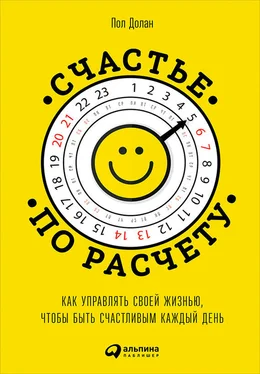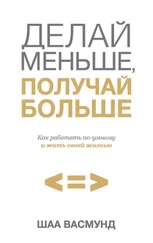Schwebel D.C., Stavrinos D., Byington K.W., Davis T., O’Neal E.E., de Jong D. Distraction and pedestrian safety: how talking on the phone, texting, and listening to music impact crossing the street. Accident Analysis & Prevention 2012; 45: 266–71.
Levy J., Pashler H., Boer E. Central interference in driving: is there any stopping the psychological refractory period? Psychological Science 2006; 17: 228–35.
DeVoe S.E., Pfeffer J. Time is tight: how higher economic value of time increases feelings of time pressure. Journal of Applied Psychology 2011; 96: 665.
DeVoe S.E., House J. Time, money, and happiness: how does putting a price on time affect our ability to smell the roses? Journal of Experimental Social Psychology 2012; 48: 466.
Aguiar M., Hurst E. Measuring trends in leisure: the allocation of time over five decades. Quarterly Journal of Economics 2007; 122: 969–1006.
Shah A.K., Mullainathan S., Shafir E. Some consequences of having too little. Science 2012; 338: 682–85.
Dolan P., Metcalfe R. With my money on my mind: income, happiness and intrusive financial thoughts. Unpublished working paper, 2011.
Smallwood J., Schooler J.W. The restless mind. Psychological Bulletin 2006; 132: 946.
Mason M.F., Norton M.I., Horn J.D.V., Wegner D.M., Grafton S.T., Macrae CN. Wandering minds: the default network and stimulus-independent thought. Science 2007; 315: 393–95.
Ziauddeen H., Farooqi I.S., Fletcher P.C. Obesity and the brain: how convincing is the addiction model? Nature Reviews Neuroscience 2012; 13: 279–86.
Killingsworth M.A., Gilbert D.T. A wandering mind is an unhappy mind. Science 2010; 330: 932.
Nolen-Hoeksema S., McBride A., Larson J. Rumination and psychological distress among bereaved partners. Journal of Personality and Social Psychology 1997; 72: 855–62.
Dolan P. Thinking about it: thoughts about health and valuing QALYs. Health Economics 2011; 20: 1407–16.
Gilkey J.G. You can master life. Macmillan, 1938.
Bennett P., Phelps C., Brain K., Hood K., Gray J. A randomized controlled trial of a brief self-help coping intervention designed to reduce distress when awaiting genetic risk information. Journal of Psychosomatic Research 2007; 63: 59–64.
Wood W., Quinn J.M., Kashy D.A. Habits in everyday life: thought, emotion, and action. Journal of Personality and Social Psychology 2002; 83: 1281–97.
Powers W. Hamlet’s BlackBerry. HarperCollins, 2011.
Spitzer M. Demencia digital (Digital dementia). Ediciones B, 2013.
Yuan K., Qin W., Wang G., et al. Microstructure abnormalities in adolescents with Internet addiction disorder. PloS ONE 2011; 6: e20708.
Hofmann W., Vohs K.D., Baumeister R.F. What people desire, feel conflicted about, and try to resist in everyday life. Psychological Science 2012; 23: 582–88.
Turkle S. Alone together: why we expect more from technology and less from each other. Basic Books, 2011.
Rothberg M.B., Arora A., Hermann J., Kleppel R., Marie P.S., Visintainer P. Phantom vibration syndrome among medical staff: a cross sectional survey. British Medical Journal 2010; 341.
The phone stacking game changes everything. Huffington Post , Oct. 1, 2012.
The communications market report. United Kingdom: a nation addicted to smartphones. OfCom, 2011.
The communications market report. United Kingdom: UK is now texting more than talking. OfCom, 2012.
Ferrari J.R., Harriott J.S., Zimmerman M. The social support networks of procrastinators: friends or family in times of trouble? Personality and Individual Differences 1998; 26: 321–31.
Borkovec T.D., Ray W.J., Stober J. Worry: a cognitive phenomenon intimately linked to affective, physiological, and interpersonal behavioral processes. Cognitive Therapy and Research 1998; 22: 561–76.
O’Donoghue T., Rabin M. Choice and procrastination. Quarterly Journal of Economics 2001; 116: 121–60.
Bui N.H. Effect of evaluation threat on procrastination behavior. Journal of Social Psychology 2007; 147: 197–209.
Jeanmonod R., Jeanmonod D., Ngiam R. Resident productivity: does shift length matter? American Journal of Emergency Medicine 2008; 26: 789–91.
Kahneman D., Tversky A. Intuitive prediction: biases and corrective procedures. DTIC Document, 1977.
Van Eerde W. A meta-analytically derived nomological network of procrastination. Personality and Individual Differences 2003; 35: 1401–18.
Buehler R., Griffin D., Ross M. Exploring the “planning fallacy”: why people underestimate their task completion times. Journal of Personality and Social Psychology 1994; 67: 366–81.
Amabile T.M., Hadley C.N., Kramer S.J. Creativity under the gun. Harvard Business Review 2002; 80: 52–61.
Frost R.O., Marten P., Lahart C., Rosenblate R. The dimensions of perfectionism. Cognitive Therapy and Research 1990; 14: 449–68.
Dolan P., Rudisill C. Babies in waiting: why increasing the IVF age cut-off is likely to lead to fewer wanted pregnancies. Under review, 2013.
Cadena X., Schoar A., Cristea A., Delgado-Medrano HM. Fighting procrastination in the workplace: an experiment. National Bureau of Economic Research, 2011.
Roy M., Christenfeld N., McKenzie C. Underestimating the duration of future events: memory incorrectly used or memory bias? Psychological Bulletin 2005; 131: 738–56.
Wohl M.J., Pychyl T.A., Bennett S.H. I forgive myself, now I can study: how self-forgiveness for procrastinating can reduce future procrastination. Personality and Individual Differences 2010; 48: 803–8.
Steel P. The nature of procrastination: a meta-analytic and theoretical review of quintessential self-regulatory failure. Psychological Bulletin 2007; 133: 65.
Shu S.B., Gneezy A. Procrastination of enjoyable experiences. Journal of Marketing Research 2010; 47: 933–44.
Ariely D., Wertenbroch K. Procrastination, deadlines, and performance: self-control by precommitment. Psychological Science 2002; 13: 219–24.
Kruger J., Evans M. If you don’t want to be late, enumerate: unpacking reduces the planning fallacy. Journal of Experimental Social Psychology 2004; 40: 586–98.
Читать дальше
Конец ознакомительного отрывка
Купить книгу












